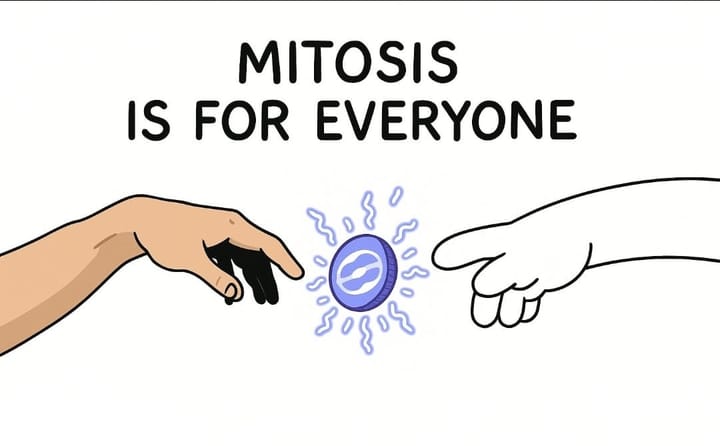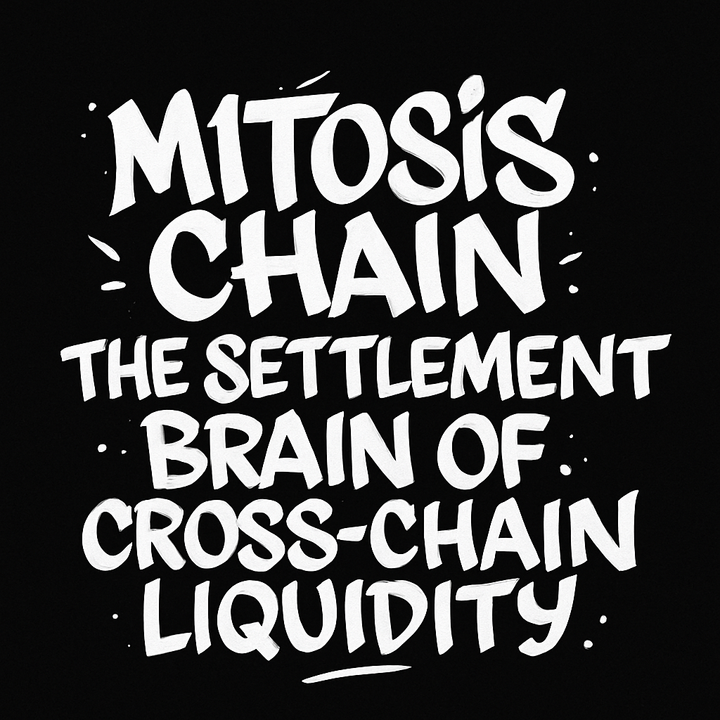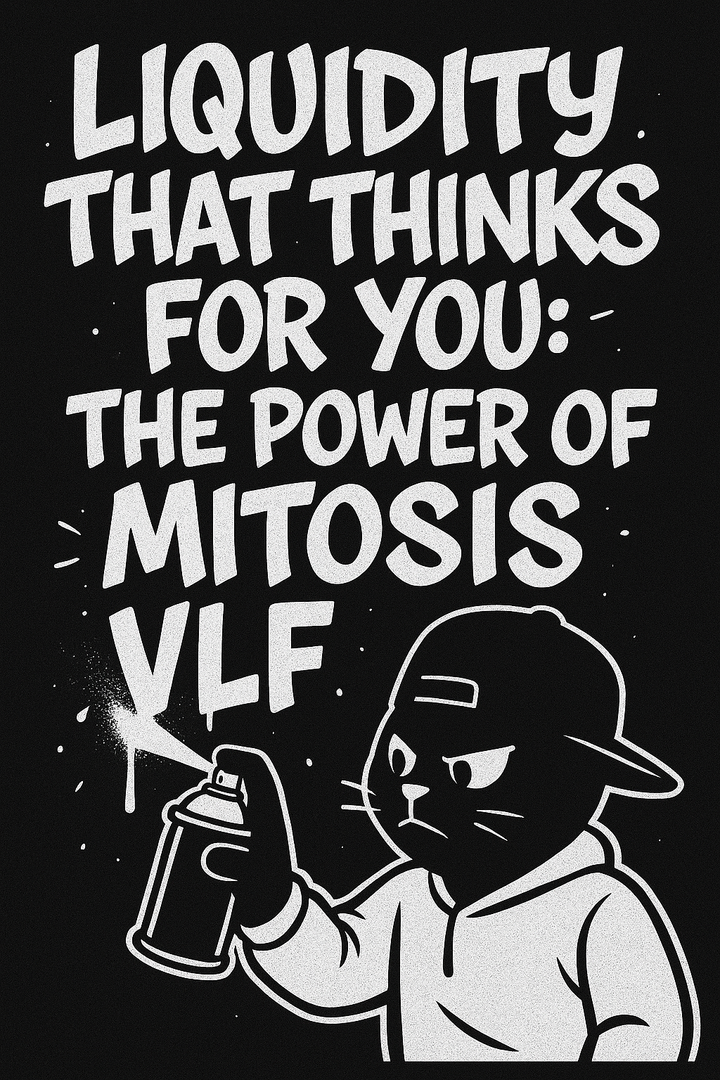Strategic Shifts in Stablecoins & Digital Payments: A New Era for Global Finance

Introduction
If you can’t beat ’em, join ’em, right? A decade ago, the crypto industry was the wild child of finance, sneered at by banks and regulators as a playground for speculators and dreamers.
Fast forward to June 2025, and the tides have turned—stablecoins are no longer just crypto’s quirky side hustle; they’re 'muscling' their way into the heart of global finance.
On June 5, 2025, Tether and Bitfinex unveiled "Stable" L1, a new Layer 1 blockchain closely tied to the Plasma L1 project, aimed at institutional-grade solutions (X). Meanwhile, Tether doubled down on its global reach with an investment in Shiga Digital, an Abu Dhabi-based startup pushing blockchain finance across Africa (The Block).
And on the same day, Circle, the issuer of USDC, went public with a blockbuster $1.1 billion IPO on Nasdaq, proving crypto’s ready for the big leagues (The Economic Times).
These steps—covering new tech, growth in developing markets, and acceptance by big finance—show stablecoins becoming key players in digital payments.
This article dives into these game-changing developments, their impact on institutional adoption, and what they mean for the future of finance.
Tether and Bitfinex Launch “Stable” L1: A Blockchain Built for Institutions
A Purpose-Built Chain for Financial Use
On June 5, 2025, “Stable”, a new Layer 1 blockchain created specifically for institutional finance was announced. Backed by Tether and Bitfinex, the chain is designed for speed, scale, and cost-efficiency—particularly around stablecoin operations.
Its core focus? Supporting large-scale financial transactions, with USDT (Tether’s stablecoin) at the heart of the system.
What Makes Stable L1 Different?
USDT as Gas Token
Unlike most blockchains that require a separate token (like ETH or SOL) to pay fees, Stable L1 uses USDT as the native gas token. This simplifies operations for institutions that already hold USDT in bulk.
Zero-Fee Transfers
Peer-to-peer USDT transfers on Stable L1 can be fee-free, likely using a delay-based model—users can wait longer for confirmation in exchange for zero cost. Faster confirmations or advanced actions will still require a fee, payable in USDT or Bitcoin.
Simple Treasury Management
By allowing transaction fees in stable assets (USDT, BTC), institutions can avoid the hassle of managing volatile native tokens.
Why Institutions Might Care
Stable L1 is tailored for real-world financial applications, not crypto speculation. It’s positioned to serve:
- Cross-border payments
- Trade finance
- Fintech payment rails
Key benefits include:
| Feature | Why It Matters |
|---|---|
| Zero-Fee Transfers | Cuts down costs for high-volume transaction users like banks or payment platforms. |
| USDT as Gas | No need to convert between tokens—simplifies back-office processes. |
| High Scalability | Designed to handle institutional-level throughput. |
| Institutional Focus | Targets practical use cases over DeFi or retail trading. |
| Compliance-Oriented | Aims to support regulatory needs, though exact details are still unclear. |
What to Watch Out For
Zero-Fee Model Sustainability
Running a blockchain isn’t free—there are always costs for storage, validation, and network upkeep. The zero-fee model might be supported by premium features or tiered service levels, but long-term sustainability remains a question.
Regulatory Readiness
Stable L1 promotes a compliance-friendly image, but KYC/AML implementation details are still pending. That could be a sticking point for adoption by banks and regulated entities.
Stable L1 is a notable move by Tether and Bitfinex to build financial-grade infrastructure that leverages the ubiquity of USDT. If the platform can balance free usage, scalability, and compliance, it may become a go-to chain for institutions needing stable, low-cost, and regulated blockchain rails.
Tether’s African Expansion via Shiga Digital
Strategic Investment in Shiga Digital
Tether has invested in Shiga Digital, a small Abu Dhabi-based startup focused on delivering blockchain finance across Africa (The Block).
Shiga Digital offers virtual accounts, OTC trading, treasury management, FX solutions, and a USDT payment gateway, alongside Banking-as-a-Service (BaaS) for African businesses. This move supports Tether’s aim to tackle African financial challenges like cross-border payments and liquidity access, especially for industries like oil and gas (Tether.to).
Shiga Digital’s Role and Competitive Positioning
Shiga Digital targets B2B fintech, providing virtual accounts, OTC services, and BaaS to help businesses launch digital banking solutions (Shiga Digital).
Its USDT gateway enables direct transactions for goods and services, bypassing local currency conversions. In Africa’s crowded fintech space, Shiga competes with players like Yellow Card, active in 20 countries, and AZA Finance, a leader in cross-border payments.
Its tight integration with Tether’s ecosystem may offer advantages in USDT liquidity and efficiency (Tether.io).
Tether's Strategic Initiatives in Africa
| Initiative/Partner | Nature | Focus | Key Objectives |
|---|---|---|---|
| Shiga Digital | Investment, Collaboration | Pan-African blockchain finance | Tackle payment barriers, enable USDT transactions |
| Quidax | Partnership | Crypto & financial education | Educate 15,000+ in Nigeria & Ghana |
| MANSA | Investment | Cross-border payments | Enhance solutions for African clients |
| Bitcoin Mining | Initiative | Bitcoin mining | Expand crypto infrastructure |
| Africa Blockchain Institute | Collaboration | Blockchain education in Ivory Coast | Build blockchain skills |
| Africa Tech Summit | Sponsorship | Ecosystem engagement | Promote crypto adoption |
| African Bitcoin Conference | Sponsorship | Ecosystem engagement | Promote crypto adoption |
Implications for Financial Inclusion
Tether’s initiatives address Africa’s financial pain points, where inflation and currency volatility fuel crypto demand. USDT provides a stable tool for savings, transactions, and credit in underbanked regions.
By easing cross-border payments, Tether supports SMEs and industries boosting inclusion.
Challenges in Africa
Tether navigates a patchwork of crypto regulations across Africa. Competition from established fintechs like Yellow Card and AZA Finance poses a challenge.
Shiga Digital’s small size may limit scalability, even with Tether’s support.
Circle’s Landmark IPO and Growth Strategy
A Historic Public Debut
On June 6, 2025, Circle, the issuer of USDC, went public on Nasdaq (ticker: CIRC), raising $1.1 billion with 34 million shares at $31 each (The Economic Times).
The IPO was oversubscribed 25 times, with shares opening at $69.33 and peaking at $103.75, valuing Circle at $18–$22.5 billion. Backed by J.P. Morgan, Citigroup, and Goldman Sachs, it drew interest from Ark Invest and BlackRock.
Circle (CIRC) IPO - Performance Snapshot
| Metric | Detail |
|---|---|
| IPO Date | June 5 , 2025 |
| Exchange | Nasdaq |
| Ticker Symbol | CIRC |
| Offer Price | $31 per share |
| Shares Offered | 34 million |
| Capital Raised | Approx. $1.1 billion |
| Initial Valuation | ~$6.9 billion (up to $8.1B fully diluted) |
| Opening Price | $69.33 per share |
| Peak Price | $103.75 per share |
| Valuation at Peak | ~$18.9B (fully diluted ~$22.5B) |
| Oversubscription | 25 times |
| Lead Underwriters | J.P. Morgan, Citigroup, Goldman Sachs |
Significance for Crypto Legitimacy
Circle’s IPO is a turning point for crypto, signaling mainstream acceptance and drawing institutional capital.
It shows crypto firms can meet financial and regulatory standards, encouraging other public listings. Aligned with U.S. stablecoin laws like the STABLE Act, Circle is poised for regulatory clarity (Arnold & Porter).
Post-IPO Growth Strategy
Circle aims to bolster USDC’s market position, with a $61–$64 billion market cap, trailing USDT ($150–$154 billion) (The Economic Times).
It expands across chains, issuing 250 million USDC on Solana and launching on Sonic to boost DeFi liquidity (AI invest). CEO Jeremy Allaire sees USDC as a global payment layer (CryptoSlate).
Circle diversifies revenue beyond reserve interest ($1.68 billion in 2024) with Web3 Services like Programmable Wallets and Smart Contracts, using fee-based models (Circle Support).
Its Cross-Chain Transfer Protocol (CCTP) V2 offers Fast Transfers (8–20 seconds) and Hooks for smart contract integration (Circle Docs). The Circle Payments Network (CPN) enables instant stablecoin settlements.
CCTP V1 vs. V2 – Feature Comparison
| Feature | CCTP V1 | CCTP V2 |
|---|---|---|
| Launch Date | April 26, 2023 | March 11, 2025 |
| Transfer Speed | ~13–19 minutes | ~8–20 seconds (Fast); ~13–19 mins (Standard) |
| Supported Blockchains | Aptos, Arbitrum, Avalanche, etc. | Arbitrum, Avalanche, Base, etc. |
| Pricing | Free for Standard | Free (Standard & Hooks); Fee for Fast |
| Key Functionalities | Standard USDC transfers | Fast Transfers, Hooks, Standard |
Competitive Dynamics
Circle markets USDC as a “regulated blockchain fund,” with daily reserve transparency and G-SIB custody (AlphaSense). Unlike Tether’s less transparent model, USDC targets regulated institutions, though USDT leads in liquidity. New players like PayPal USD and potential bank-backed stablecoins add competition (Treasurup). Circle’s BlackRock partnership and IPO funds fuel its global push.
Comparative Overview – Circle (USDC) vs. Tether (USDT) Strategic Approaches
| Aspect | Circle (USDC) | Tether (USDT) |
|---|---|---|
| Primary Stablecoin | USDC (+EURC) | USDT |
| Regulatory Posture | Compliance-first, publicly traded | Global, less transparent |
| Key Tech/Infrastructure | CCTP, CPN, Web3 Services | T-chain, Bitcoin Mining |
| Target Markets | Regulated finance, U.S., developers | Global traders, emerging markets |
| Revenue Drivers | Reserve interest, Web3 & CCTP fees | Reserve interest, investments |
| Differentiator | Transparency, compliance, tools | Liquidity, adoption |
Synthesis and Future Outlook
Interplay of Initiatives
Tether’s T-chain, with its institutional focus and low-cost USDT transfers, challenges Circle’s CCTP-driven USDC ecosystem. Tether’s African push taps emerging markets, while Circle’s IPO strengthens its regulated market play. These efforts drive stablecoin institutionalization and competition.
Maturation of Stablecoins
Stablecoins are shifting from trading tools to global payment rails, outpacing Visa and Mastercard volumes in 2024 (AlphaSense). Projected to hit trillions by 2030, they aim to replace SWIFT with solutions like CPN and T-chain. Developer ecosystems—CCTP’s APIs vs. T-chain’s flexibility—will shape dominance (Circle Docs).
Bifurcating Paths and Opportunities
The industry splits: Circle aligns with traditional finance, while Tether builds crypto-native systems. Opportunities lie in DeFi, institutional products, and inclusion, especially in Africa.
Headwinds to Navigate
Regulatory uncertainty, competition, and tech challenges like scalability persist (Arnold & Porter). Circle’s interest rate reliance and Tether’s transparency issues are risks (AInvest). Emerging markets face infrastructure and onboarding hurdles (Emerging Africa).
Conclusion
Tether and Circle’s moves herald a new era for stablecoins, driving efficiency, inclusion, and programmable finance. Success depends on navigating regulations, competition, and tech barriers. Stablecoins are set to redefine global value transfer, reshaping finance.
References
[1]. Stable, "We've spent the past year quietly building new ...," , https://x.com/stable/status/1930626732144640175.
[2]. The Economic Times, "Circle CRCL IPO sparks crypto's game-changing future https://m.economictimes.com/news/international/us/circle-crcl-ipo-sparks-cryptos-game-changing-future-usdc-stablecoin-giant-rockets-past-expectations-with-1-1b-raise-at-31/share-in-nyse-debut-investors-fixate-on-soaring-8-1b-valuation/articleshow/121653719.cms.
[3]. Morningstar, "Circle's $1.1 billion IPO shows Wall Street is taking stablecoins seriously as its stock nearly triples," Morningstar, https://www.morningstar.com/news/marketwatch/20250605262/circles-11-billion-ipo-shows-wall-street-is-taking-stablecoins-seriously-as-its-stock-nearly-triples.
[4]. The Block, "Tether expands footprint in Africa with investment in small startup ...," https://www.theblock.co/post/357183/tether-expands-footprint-in-africa-with-investment-in-small-startup?utm_source=telegram1&utm_medium=social.
[5]. Circle Docs, "Cross-Chain Transfer Protocol," Circle Docs, June 5, 2025, https://developers-circle.com/stablecoins/cctp-getting-started.
[6]. Emerging Africa, "Leveraging Technology to Revolutionize Trade Finance in Africa," Emerging Africa, https://emergingafrica.online/leveraging-technology-to-revolutionize-trade-finance-in-africa/
[7]. AlphaSense, "Circle and the Stablecoin Market | An AlphaSense Primer," AlphaSense, https://www.alpha-sense.com/blog/primer/circle-stablecoin-market/.
[8]. AInvest, "Circle Is About To Make History By Being The First Stablecoin IPO In NYSE," AInvest, https://www.ainvest.com/news/circle-history-stablecoin-ipo-nyse-2506/.
[9].AZA Finance, "AZA Finance: Global Money Transfers and Payment Solutions," AZA Finance, https://azafinance.com/.
[10]. CoinTrust, "Tether and Quidax Partner to Boost Blockchain Education in Africa," CoinTrust, https://www.cointrust.com/market-news/tether-and-quidax-partner-to-boost-blockchain-education-in-africa.
[11]. Shiga, "fintechs | Shiga BaaS Portal," Shiga, https://shiga.ng/fintechs
[12]. Arnold & Porter, "What You Need To Know About Incoming Stablecoin Legislation," Advisories, https://www.arnoldporter.com/en/perspectives/advisories/2025/06/incoming-stablecoin-legislation-stable-and-genius-acts.
[13]. Treasurup, "Stablecoins in 2025: The Strategic Playbook for Banks," Treasurup, https://treasurup.com/stablecoins-strategic-playbook-banks-2025/.
[14]. Tether, "Tether Invests in Shiga Digital to Strengthen Africa's On-Chain ...," Tether.io, https://tether.io/news/tether-invests-in-shiga-digital-to-strengthen-africas-on-chain-financial-ecosystem/.
[15]. Binance, "Tether Invests in African Blockchain Platform Shiga Digital," Binance https://www.binance.com/en/square/post/25214166731602.



Comments ()